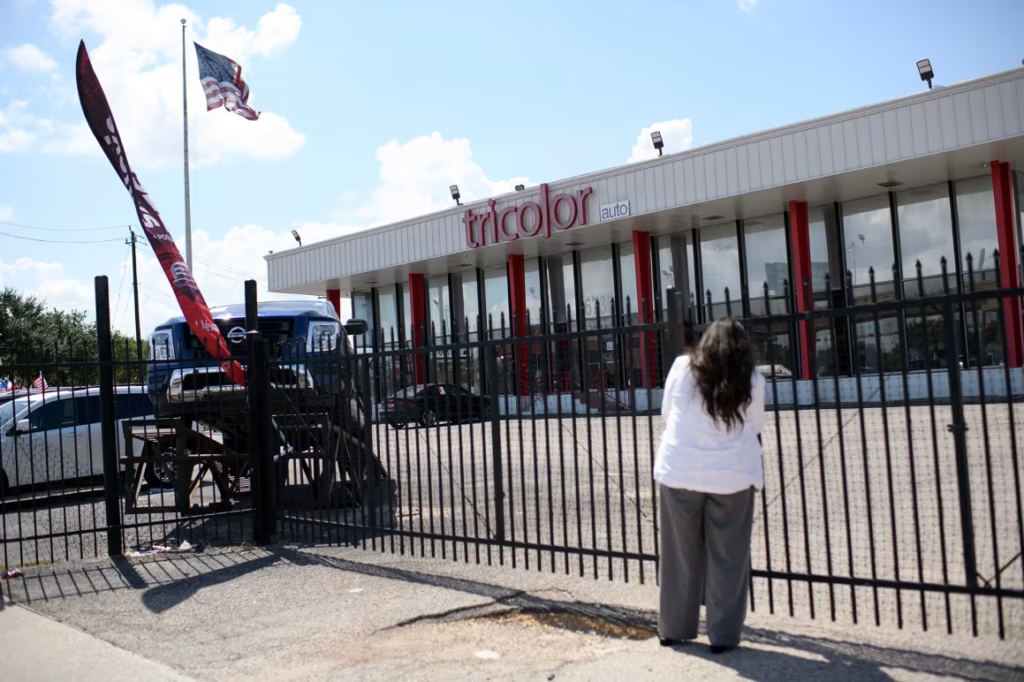The collapse of Tricolor Holdings, a major subprime auto lender, has raised alarms about the stability of risky car loans and their potential impact on the wider economy. The company filed for Chapter 7 bankruptcy earlier this month, citing liabilities in the billions and leaving more than 25,000 creditors exposed.
Tricolor specialized in financing vehicles for borrowers with poor or limited credit histories, bundling those loans into securities sold to investors. But investigators uncovered irregularities in its lending practices, including allegations of duplicate collateral pledges. The fallout triggered a wave of concern among banks and investors tied to the firm’s securitized loans.
Fifth Third Bank, one of Tricolor’s largest partners, has already projected losses of up to $200 million linked to the bankruptcy. JPMorgan Chase and Barclays are also among the financial institutions facing exposure. Analysts warn that the shock could ripple across the auto lending market if delinquencies continue to climb.
Subprime auto loans have been under pressure for months as delinquency rates rose, particularly among borrowers facing high living costs and limited savings. While some industry leaders argue the Tricolor collapse is an isolated event tied to alleged fraud, others see it as a red flag for systemic risks in auto finance.
For consumers, the shake-up could mean tighter access to financing and higher interest rates, especially for those with weak credit. For investors, the case has sparked calls for stronger oversight of auto loan securitization. And for the broader economy, it has renewed debate about whether stresses in subprime lending could contribute to recession risks.
The auto loan market may not be as large as the mortgage sector that triggered the 2008 financial crisis, but experts say the warning signs should not be ignored. With household budgets stretched thin and borrowing costs rising, the subprime auto market is now a key area to watch in gauging financial stability.


